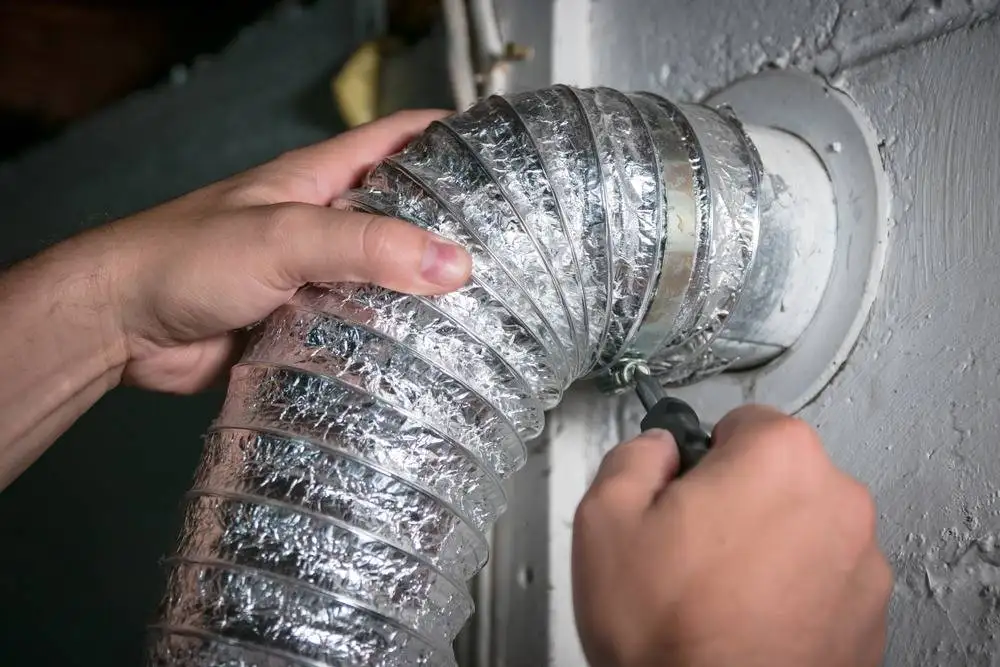One of the most critical yet often overlooked components in a home or business is the dryer vent. If you own a dryer, whether it’s a residential unit or a commercial system, understanding the standard size of a dryer vent is crucial for safety and efficiency. In this article, we will discuss everything you need to know about the standard size of a dryer vent, why it’s important, and how it affects your day-to-day life.
Primarily, the standard size of a dryer vent has direct implications on the safety and efficiency of your dryer system. This article will delve deep into these aspects and provide actionable insights to ensure your system operates optimally.

Why Knowing the Standard Size is Essential
Understanding the size requirements for your dryer vent is essential for several reasons. Incorrect sizing can lead to inefficiencies and even hazards. Here’s why:
- Fire Safety: Incorrect sizes can lead to lint buildup, a common cause of dryer fires.
- Energy Efficiency: Proper sizing ensures that your dryer operates efficiently, saving you energy and cost.
- Longevity of Appliance: A correctly-sized vent helps in prolonging the life of your dryer.
Standard Size Specifications
The standard size for a dryer vent typically ranges from 4 inches to 6 inches in diameter. The length of the vent can vary but should not exceed 35 feet. If turns are necessary, each 90-degree turn typically reduces the maximum length by about 5 feet.
Residential vs. Commercial Systems
While the general specs remain similar, residential dryer vents usually adhere to the lower end of the diameter spectrum (4 inches), whereas commercial dryer vents may go up to 6 inches to accommodate larger volumes of air and lint.
Material Matters
The material of the vent also plays a crucial role. Here are common materials used:
- Aluminum: Light, affordable, and durable; not suitable for all fire codes.
- Steel: More durable and often meets stricter fire codes.
- Plastic: Generally not recommended due to fire hazards.
Installation Best Practices
Proper installation is essential for the effectiveness and safety of your dryer vent system. Here are best practices to consider:
Correct Routing
Ensure that the vent takes the shortest and most direct route to the outside, minimizing turns and bends.
Proper Sealing
Use appropriate sealing methods to prevent leaks. Tape specifically designed for dryer vents can be highly effective.
Routine Maintenance
Regularly clean the vent to prevent lint buildup. This step not only ensures safety but also improves efficiency. For comprehensive maintenance tips, visit residential duct cleaning.
Common Installation Mistakes
The following are some common mistakes to avoid during installation:
- Long Uninterrupted Runs: Longer vents increase the chances of lint buildup and decrease overall efficiency.
- Incorrect Material: Using materials not suited for high temperatures can be hazardous.
- Improper Routing: Too many bends and turns can block airflow. For detailed guidance on proper installation, check HVAC system.
Maintaining Dryer Vent Efficiency
To ensure that your dryer vent remains efficient, regular maintenance is necessary. Heres how:
Periodic Cleaning
Regularly cleaning the dryer vent ensures that it remains free from obstructions. Lint and other debris can accumulate over time, which can cause hazards and inefficiencies.
For extensive cleaning guides, you can refer to this comprehensive guide.
Check for Damages
Inspect the vent regularly for any damages or wear and tea r. Cracks or broken segments can compromise efficiency and safety.
r. Cracks or broken segments can compromise efficiency and safety.
Professional Inspections
Consider getting a professional inspection annually to ensure everything is in order. Professional services can provide insights that you might overlook.
FAQ
How often should dryer vents be cleaned?
It’s advisable to clean dryer vents at least once a year. However, for heavy users, more frequent cleaning may be necessary.
What materials are best for dryer vents?
Aluminum and steel are preferred due to their durability and heat resistance. Plastic vents are generally not recommended.
Can I install a dryer vent myself?
While DIY installation is possible, it’s recommended to consult professionals to ensure correct sizing and installation practices.
For more detailed information on HVAC systems and maintenance, you can refer to articles on commercial duct cleaning.